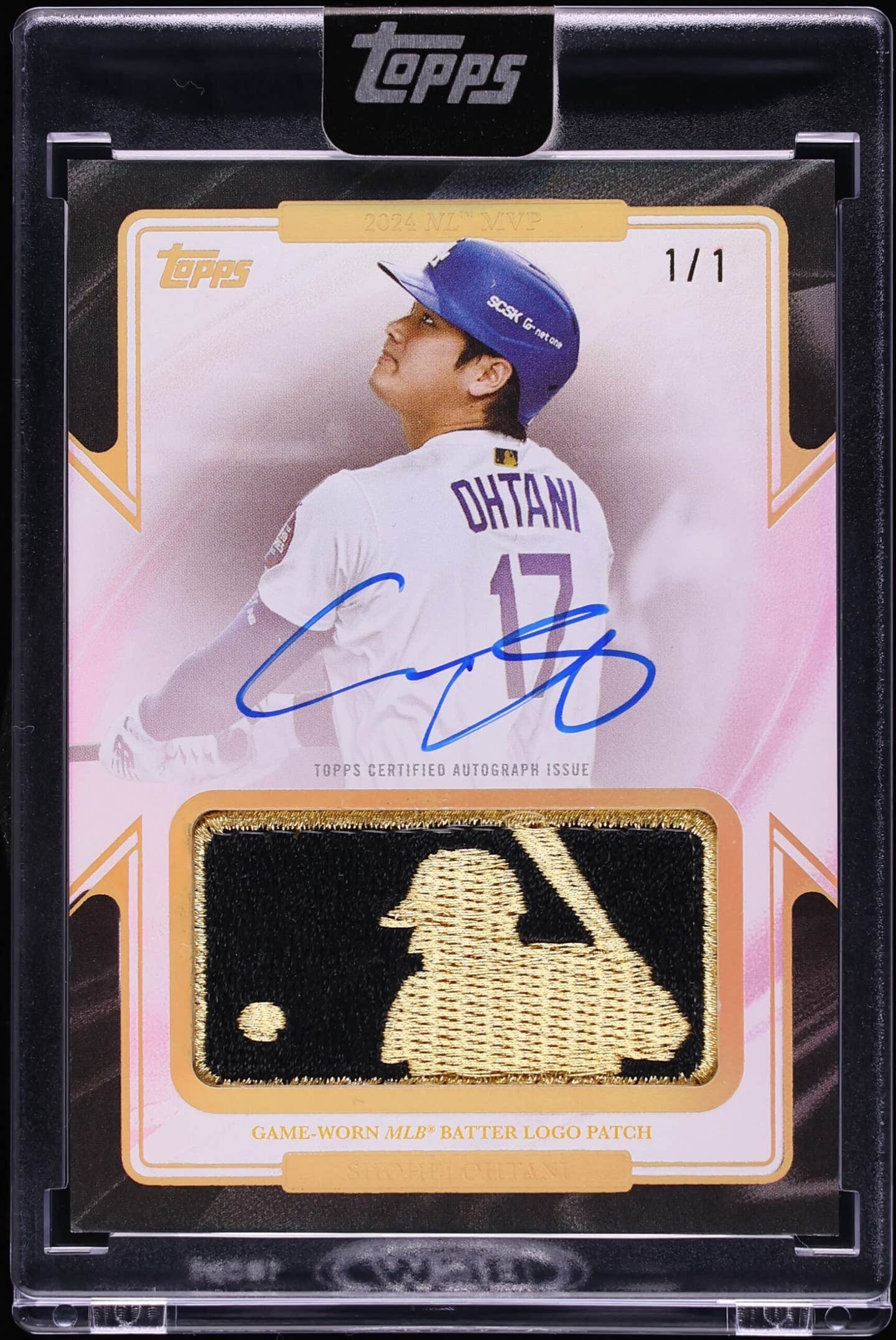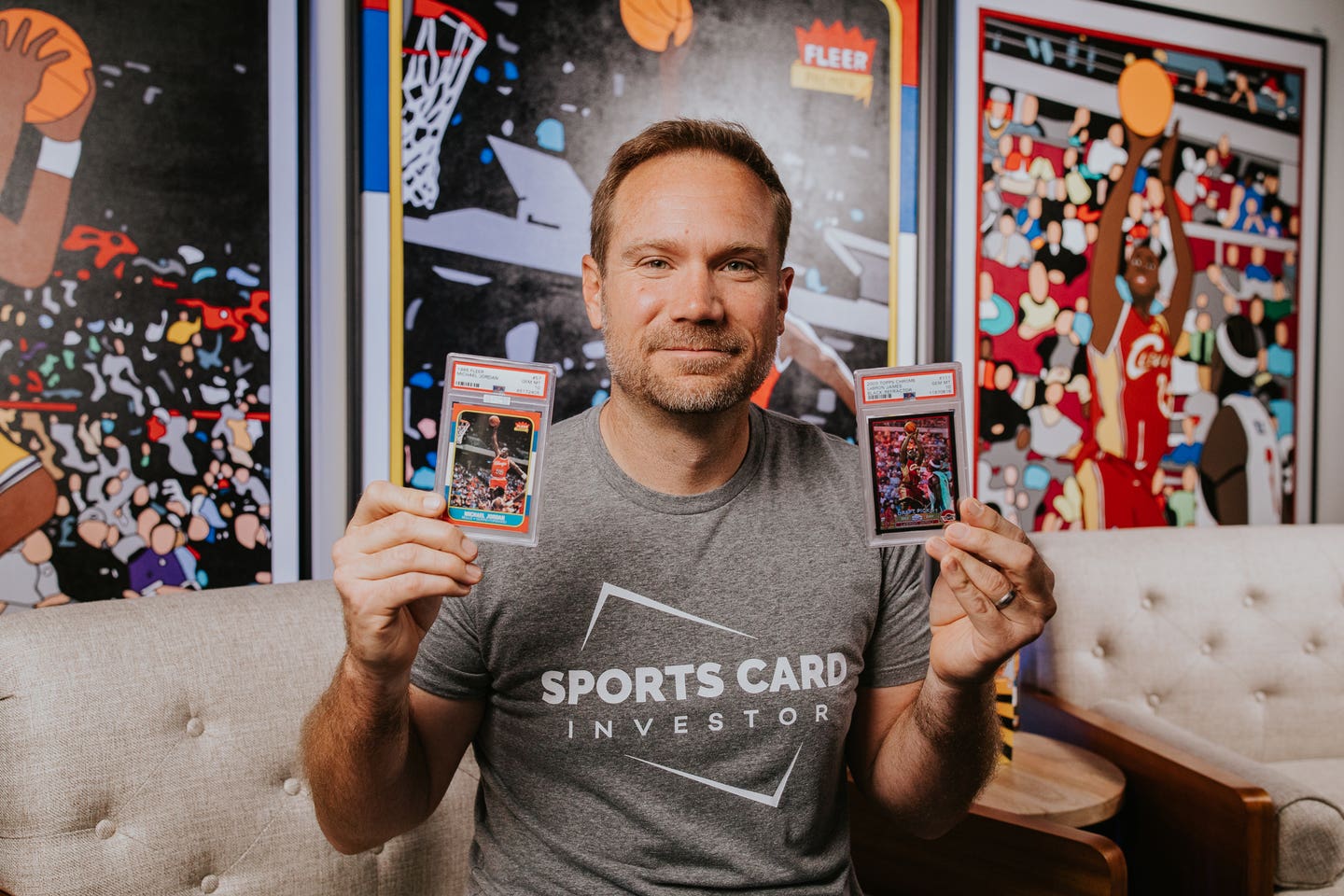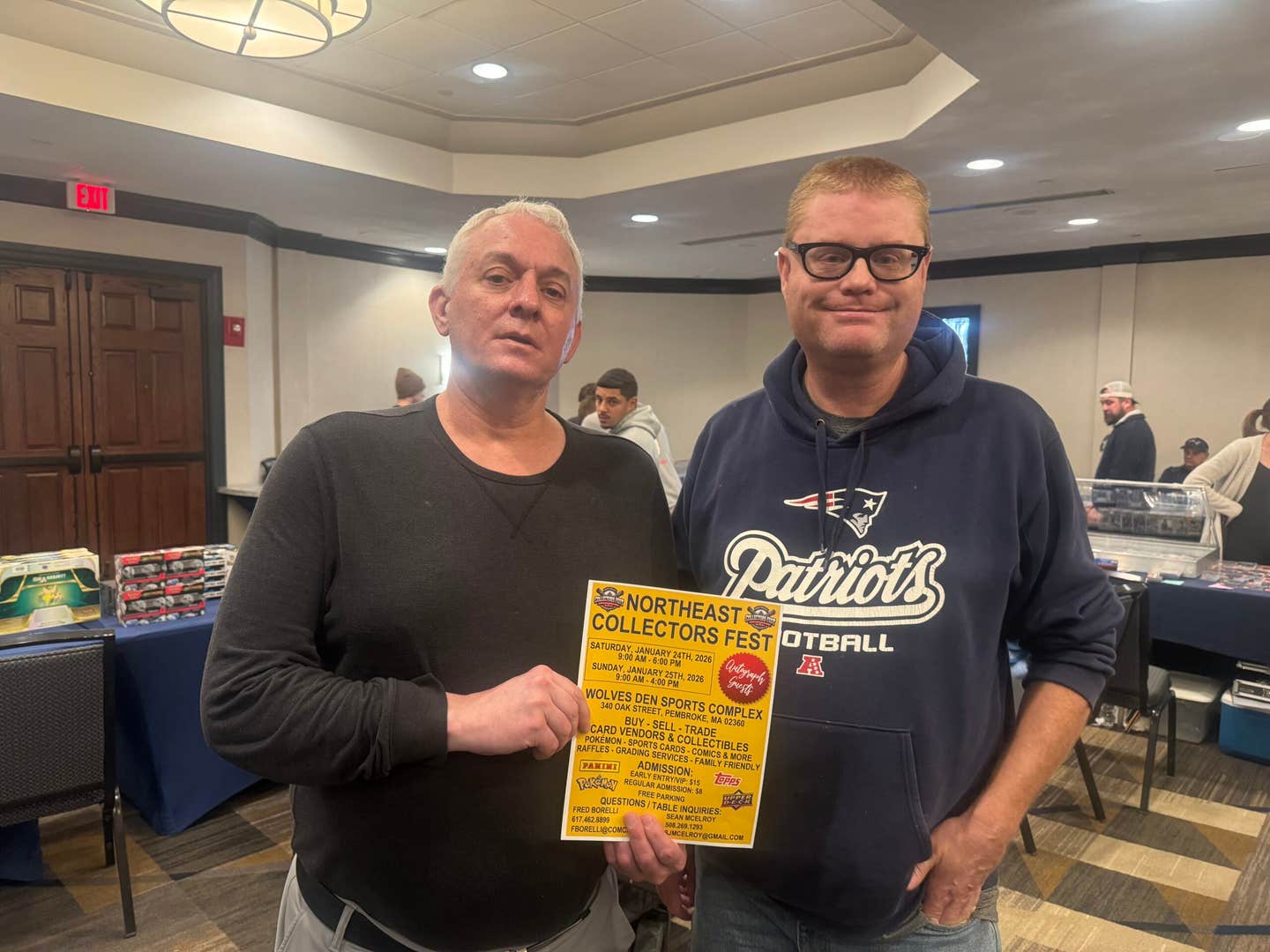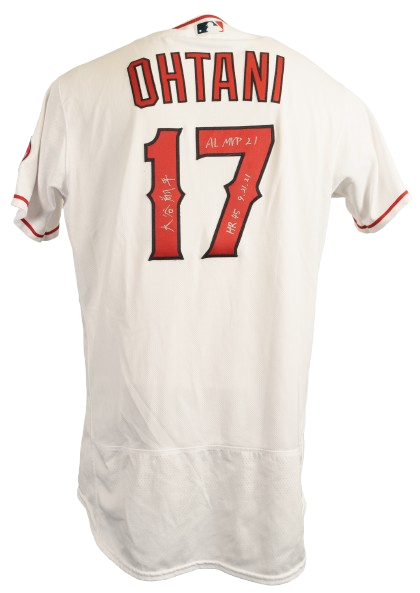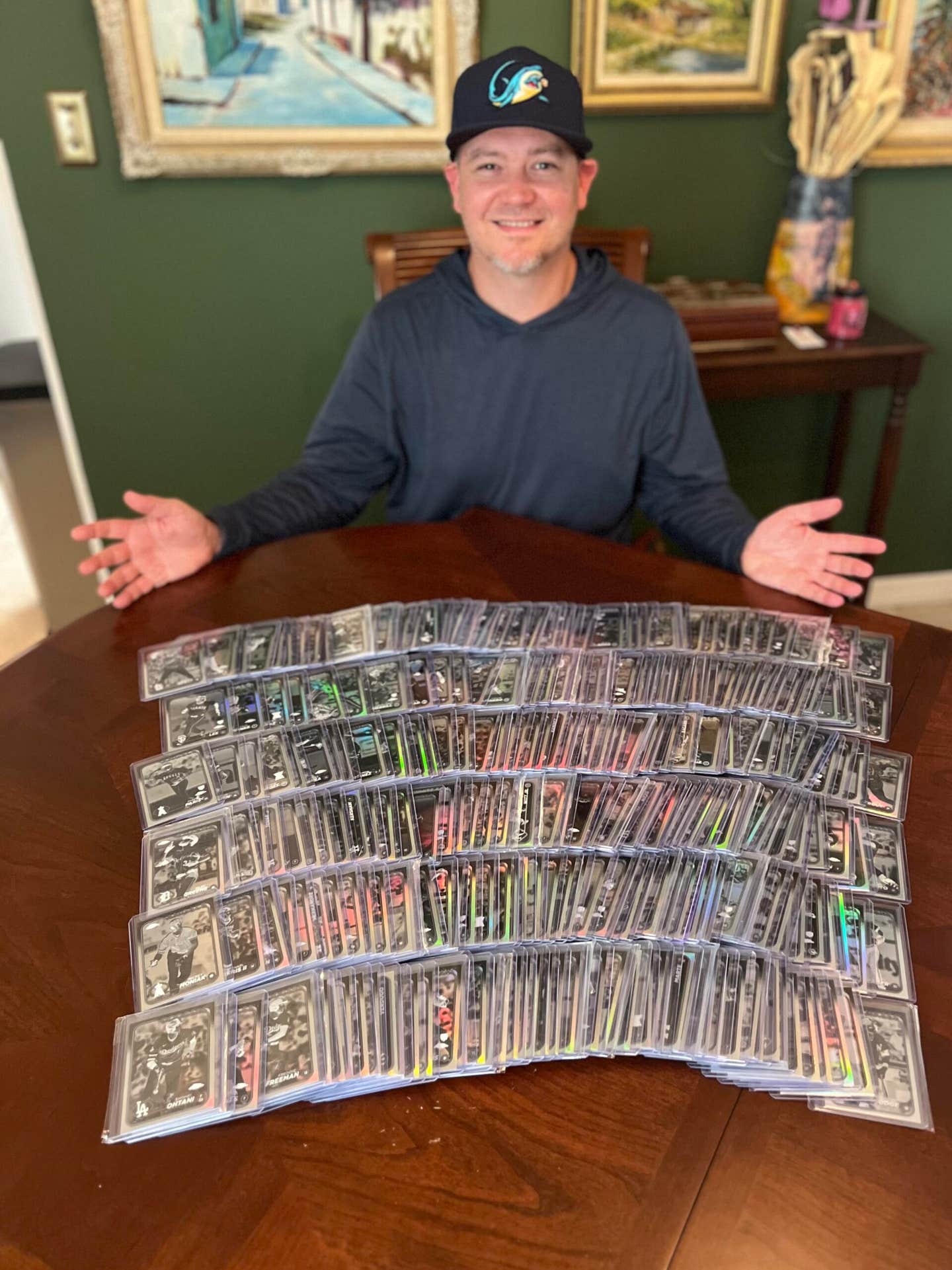Collecting 101
Everything you always wanted to know about the 195
In 1959 and 1960, the Darigold Farm Co. was highly involved in marketing their dairy product line with the Spokane Indians minor league baseball organization. In fact, during these two years, their scorecard programs contained the Darigold logo on their covers. Darigold proudly marketed their orangejuice drink on program covers during this time.
During these years, the Spokane Indians were the top AAA minor league club for the Los Angeles Dodgers. The Darigold Co. produced two sets of baseball cards that were glued to their one-quart milk cartons. Each card contained a tab that was used to glue onto the carton while preserving the card. This full milk carton contained two one-quart cartons, called a "twin pack," that contained a single card sandwiched between each carton. Today, these cards are highly desirable and complete sets can cost up to $4,500.
These cards are among the highest-valued minor league sets that exist today for their time frame. A single card can cost up to $200, while future stars can run $450. Minor league baseball has been in Spokane for over 100 years, where the first game ever played in Spokane was on May 3, 1890.
During the 1959-60 season, the Pacific Coast League (PCL) contained eight teams scattered through out the Northwest (Seattle, Vancouver, Portland, Sacramento, San Diego, Tacoma and Salt Lake City). In 1959, the Indians were playing in a newly built stadium that was completed in 1958. During the two years that Darigold distributed baseball cards on milk cartons, there have been a host of minor league players who went on to become major league stars for the Los Angeles Dodgers: Tommy Davis (1959), Willie Davis, Frank Howard (1960) and Ron Fairly (1960) are among the future stars that went on to play for the Los Angeles Dodgers. In fact, in 1960, team manager Preston Gomez, led the team to its first PCL title.
Darigold Baseball Card History
In researching this article, it became apparent that much of the history behind these baseball cards was lost over time. Most of the key individual people who were involved with the marketing, printing or management are deceased. All of the corporate memory or files pertaining to these cards were destroyed, while new computers now occupy their cabinet space.
However, this is not surprising because the companies involved have moved or consolidated to different companies or buildings over the last 46 years. However, with all this said, I was able to meet some key individuals at Darigold who helped answer many questions concerning the cards. My first contact was with Earl Burdette, who is a senior pricing analyst at Darigold Corp. in Seattle, Wash.
He recommended that I talk to Tom Brown, who was the general manager and CEO of Darigold in Spokane in 1959 and 1960. Brown told me that he did remember the Darigold cards but was not directly involved with their design and distribution. He said their marketing team always had ideas to enhance milk sales and the baseball cards were a key promotion in 1959 and 1960 seasons.
Brown said that before they decided to produce baseball cards, they used a marketing scheme where people could send in milk tabs for Hopalong Cassidy paraphernalia. He said that was a bad idea because they received thousands of letters with milk tabs and they were overwhelmed in mailing the Cassidy material. So, since Darigold always had a strong relationship with the Spokane Indians, they decided to produce baseball cards to increase their one-quart milk sales. He said the marketing of the cards was probably done through newspaper, TV and radio.
Through Burdette, I met Denny Newcomb, who as a 17-year-old kid worked on the Darigold milk product line running the carton machine. He was one of the workers who actually glued the cards to the milk carton and his recollection of this time is critical in writing this article. Newcomb did tell me that Lawton Printing in Spokane printed the cards for Darigold Farms.
In phone conversations with Gary Lawton, who is the company owner and president today, he said his father ran the company at that time, adding that he was only in high school and was not involved with the cards. However, Lawton said that all the files and records from that time no longer existed. It would have been nice to discover a folder divulging the cards' designs to help describe the logic that was used to develop the concept. Also, I wonder if printing plates exist today in someone's attic? Nevertheless, I was able to confirm that Lawton printed the cards in both 1959 and 1960 seasons.
In general, I found that the history of these cards is contained within the cards themselves. People come and people go, companies move on and corporate memory is lost over time. It makes me think that this is probably normal and if I were researching other vintage cards from this time frame, I would find about the same or less information.
Sorting Out History
Today's advanced collectors who closely follow minor league cards have always assumed that Darigold cards were only issued during the PCL baseball season. My research has found that this is not true and the 1959 cards were issued for a shorter period of time compared to the 1960 set.
The first step is determining when the cards were issued is to notice that all the 1959 cards portray the Spokane Indians wearing their uniforms. Based on this simple fact, the photos of the players were not taken until after spring training when the team had already reported to Spokane. However, the 1959 cards were not quickly produced after the team reported to Spokane.
It is important to recognize that Maury Wills played for the Spokane Indians in 1959 and there is no card of him. Could this be a lost card in the set? It would be nice to think that his card was lost over time. However, my research clearly shows that this did not happen. History shows that Bob Lillis was traded to the Spokane Indians on June 2, and there is a card of him.
Wills was promoted to the Dodgers on June 2, which brought the new shortstop, Lillis, to Spokane. This was reported in the Spokane Review newspaper on Tuesday, June 2, 1959. This information suggests that Darigold was not producing baseball cards at this time. Another interesting fact: pitcher Phil Ortega, who was an 18-year-old rookie, did not start the season with the Spokane Indians but did join the team the week of June 2, as reported in the same newspaper. There is also a card of Ortega.
Based on this information, the cards were not yet considered because no card existed of Willis while Ortega and Lillis both had cards. The next piece of data to bound the exact window of when the cards were officially sent off to be designed and then to the print shop is Frank Howard, who played for Spokane in 1959. There is no Spokane Indian baseball card of him in 1959.
Howard started the 1959 season playing AA ball with Victoria, where he played 63 games before he was promoted to Spokane.
Howard presumably reported to Spokane around the third week in June. Now, recall that there is no 1959 card of him, which suggests the photos were already taken and card production was potentially in process.
In further phone discussions with Lawton concerning the printing of the cards, he told me that since the photos were back and white, and given the technology at that time, it would take approximately 1-2 weeks to produce all the cards. It appears the players who were printed on the cards comprised the entire team around the 14th of June, which is a week or two before Howard would have reported to the team. I believe the cards did not actually arrive in the supermarket until the third week in July. Newcomb recalls gluing these cards to the milk cartons after the season ended and most likely they stopped in early October during the World Series. This would leave approximately three months that the cards were actually distributed on milk cartons in 1959.
The next question that I wanted to look into: "Was there a special photo session to take the pictures for the Darigold cards?" In trying to uncover this, I called Ron Fairly, the Dodger infielder from the 1960s who is the Seattle Mariners' broadcaster, and retired major leaguer Tom Saffell to ask them if they remembered the Darigold cards. Both former players were unaware that they were on Darigolds cards. In fact, both players did not remember the cards and did not recall any photo sessions. I discovered that there was never a photo session specifically for the Spokane Indian Darigold cards.
The photos used in the cards were black and white and were taken from the Spokane Indians front office, because they were the same photos used in the game programs. Many of the card photos are exactly the same as seen in the 1959-60 programs.
The printing timeline of the 1960 Darigold card set is easier compared to the 1959 set because there exists a card of Frank Howard. Howard started the year playing for Spokane and after 23 games he was promoted to the Dodgers. Assuming the slugger reported to the Dodgers around May 18 and since Darigold already had experience producing cards, it was an easy task. These cards were available to the public on milk cartons around May 1, which means they were produced for approximately five months, compared to three months in 1959.
1959 Card Design
This set contained 22 cards that represented the Spokane Indians in 1959. They were glued to milk cartons with a tab that folded, allowing the card to be separated from the glue. The card front and background were designed with three different colors. The card numbers (1-8) have a bright-yellow background and the cards numbered 9-16 are bright red. The last segment of cards in the set are cataloged (17-22) are bright blue. Each player was photographed in black and white and laid on the color background.
The basic measurements of the card are 21/2-by-23/8 inches, while the tab that attached to the milk carton is 21/2 by 21/8 inches. The glue was inserted on the front face of the tab. The back of the card contains the Spokane Indians logo, which is an Indian with its headdress. This logo is also worn on the left shoulder of the team uniforms.
The card back is unnumbered and provides some biographical data such as name, height, weight and date of birth. The cards even provide personal information such as if the player is married or single. If the player is married, it gives the name of his wife and children. The rest of the data on the back of the card discusses the player's highlights, with lifetime and previous year's statistics.
1960 Card Design
This set contains two more cards than the 1959 set, giving it a total of 24 cards. Like the 1959 set, these cards also contained tabs that were glued to one-quart milk cartons. However, these tabs were inserted on top of the card and not on the side as configured in the 1959 set. Since the 1960 set contained white borders, it continues fully into the tab.
The 1960 set also contained black-and-white photos of the players that were overlaid on colorful backgrounds. The cards that were numbered (1-8) have yellow backgrounds, while the cards (9-16) were green. The red background cards are numbered 17-24.
The standard card measurements are 23/8-by- 211/16 inches, and the back of the card is exactly the same as the 1959 card except it contains a card number.
The numbers run from 1-24. Another difference between the years is their front (1960) has a thick white border. The 1959 cards are fully colored, while the 1960 cards have the white borders that extend fully into the tab. The 1960 cards do not contain a horizontal black strip on the bottom front with "Compliments of Darigold Farms." The 1960 card contains an all white border with its Darigold logo.
Darigold Cards Today
The Darigold baseball cards are found today in three different ways. The most desirable type is a card with its tab still attached to the card. These cards can command up to several times more the value then if the tab was removed. The next type of card that is found is with a ripped edge. These cards contain a torn edge where the owner actually ripped the card from the tab, which was attached to the milk carton.
The owner of the card was obviously not concerned about the card and was not a collector. Even though finding cards with tabs is very difficult, I would argue that finding cards with rips is harder to come across because many cards that were ripped were thrown away. A card that survived with its tab made it that far because the consumer realized the card and tab were worth more together and took the care to gently remove the tab from the milk carton.
However, if a consumer ripped the card, then it was probably put aside before going into the garbage. Also, I think many cards that were ripped by hand must have ripped into the card. So, if the owner was not careful, the rip would proceed into the card, ultimately making it worthless.
The most common types of cards found today are with sharp, clean-cut edges on the side that contained the tab. Obviously, the owner took the card off the carton with scissors or a sharp cutting edge to neatly cut the card so it was uniform. I have talked to several other advanced collectors who collect Darigold cards and I have complied statistics on the total number of cards that have tabs, ripped or cut clean. Based on a pool of 203 cards, the number of cards with tabs is 28 which is around 13 percent, while only 11 cards were ripped (51/2 percent). The number of cards that were out clean is 164, which is roughly 80 percent of all cards.
These statistics help support the notion that cards that were hand ripped did not survive because the owner of the milk carton had no interest in the card.
Getting attached to the cards
In my research for this article, I was able to discuss the details of the card attachment with Newcomb who retired from Darigold Farms after 42 years. In 1959, he graduated from high school and his first task was to work the Seal King milk carton machine where he glued the Darigold baseball cards to the milk cartons.
He performed this task for both the 1959 and 1960 seasons. These cards were glued to the one-quart milk cartons using a tab that extended from the card. Newcomb said it was very difficult gluing the cards to milk cartons because the cartons were stored in a wet and cold environment. The glue did not attach the card quickly to the carton. He had to insert a thin wooden board between the milk cartons, which applied pressure to hold the baseball cards in place.
As discussed earlier in this article, Darigold developed the Spokane Indian cards to counter their low sales of one-quart milk cartons. Newcomb said that they came up with the "twin-pack," which consisted of two-one quart milk cartons where Spokane Indian Farm baseball cards were glued to one carton and sandwiched between another. The "twin-pack" was held together with a special handle that held both cartons together.
Since both cartons were held together with this special handle, it was not possible to view the cards prior to buying the milk. The purchaser did not know who the player was, which did not skew the statistics of one player being selected from the store compared to another. Today, there is an uniform probability of finding any player because the stars were not preselected.
How many Darigold cards have survived over the years? This is illustrated in the checklist pricing shown. The card population is estimated from the number of cards glued to tw in-packs and distributed to stores in the Spokane area.
Newcomb recalled that Darigold produced approximately 1,500 twin-packs per week. This means that 1,500 cards were distributed per week to stores in the area. I estimated the total time that the cards were given out in 1959 at three months. From this time, the total number of 1959 cards delivered to stores is approximately 18,000. Since this set contains 22 cards, in the set, the total number of cards of each player could be around 800 each.
The same calculation is performed for the 24-card 1960 set given out over five months. The total number of cards is estimated to be 30,000 while the total number of cards of each player is around 1,250.
It is anyone's guess to predict the number of cards that survived today from this pool of cards. One can only wonder about the number of cards that were thrown away or ripped when taken off the carton.
The number of people who bought milk who actually collected cards is probably very small and I assume fewer than 50 cards exist today of each player. Newcomb said that he took many boxes of the Darigold cards to the local dump in Spokane because several years after 1960 the extra cards completely filled a room in the basement at the Darigold plant. That's kind of a nifty historical oddity that links the minor league cards with their mainstream Topps counterparts in 1952 Topps, when the legendary Sy Berger captained a barge reportedly filled with 400 cases of 1952 high numbers en route to a water grave in the Long Island Sound.




